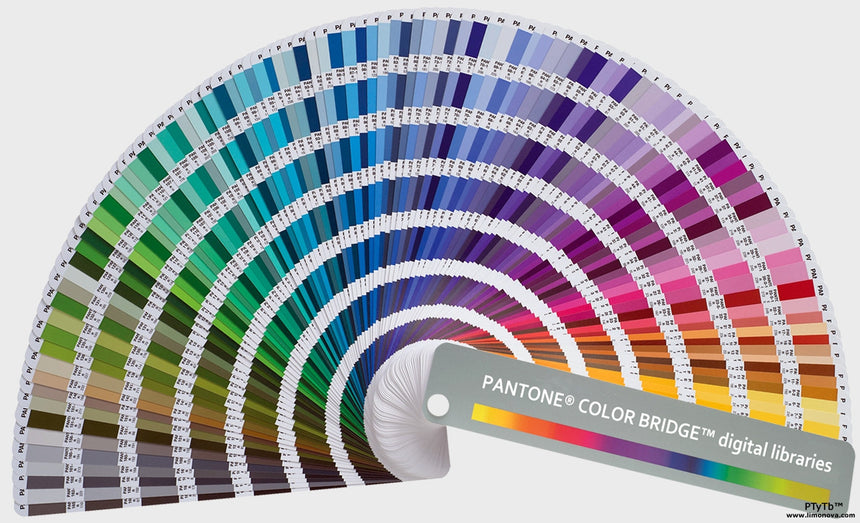Colour - Spot or four colour process recognise the difference!

Preparing a competitive proposal on a print job can be extremely difficult without relevant and accurate specifications.
What are PMS colours?
Colours created without screens or dots, such as those found in the PANTONE MATCHING SYSTEM®, are referred to as spot or solid colours. From a palette of 14 basic colours, each of the spot colours in the PANTONE MATCHING System is mixed according to its own unique ink mixing formula. Each colour in the System has a unique name or number followed by either a C for Coated paper, U for Uncoated paper or M for Matte paper. Also created without screens, PANTONE metallic and pastel colours are considered part of the PANTONE MATCHING SYSTEM.
What is four colour process?
The method of achieving colour in printing is referred to as CMYK, four–color process or just process. To reproduce a colour image, a file is separated into four different colours: Cyan (C), Magenta (M), Yellow (Y) and Black (K). During separation, screen tints comprised of small dots are applied at different angles to each of the four colours. The screened separations are then transferred to four different printing plates, one for each colour, and run on a printing press with one colour overprinting the next. The composite image fools the naked eye with the illusion of continuous tone.
What colour is my job?
When preparing a proposal it is necessary to know if your job will be printed in four colour process or PMS. If PMS colours are to be used, specific PMS numbers or a previously printed sample must be supplied in order to match the colour as closely as possible allowing for paper variants. Corporate colours are crucial to the branding of many companies, so getting the colour right the first time for your customer requires accurate specifications.

